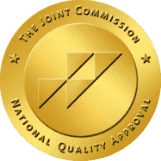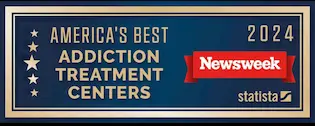OCD and Addiction
OCD and Addiction
OCD and Addiction
Learn about what OCD is and how it can contribute to substance abuse disorder.

Article Contents
What is Obsessive Compulsive Disorder (OCD)?
OCD is characterized by the presence of obsessions and/or compulsions. The difference between “developmentally normative preoccupations” and those of OCD is that preoccupations of OCD are excessive or persistent beyond an appropriate period. Several factors must be assessed for clinical diagnosis, including the individual’s level of distress and impairment in functioning.
Individuals with OCD often have dysfunctional beliefs and varying degrees of insight into the validity of these beliefs. For instance, individuals with good or fair insight recognize that their OCD beliefs are not true. Those with poor insight think their OCD beliefs are probably true, and individuals with no insight are convinced that their OCD beliefs are true.
Find Help Now
Origins of OCD
OCD has been associated with a hyperactive circuit in the brain that includes the orbitofrontal cortex (involved in planning and decision-making), the basal ganglia (involved in motor acts and motor learning and habits), and the thalamus (which filters information coming into the nervous system).
While research shows that the circuit in brains with OCD functions abnormally, the cause of that abnormal function is not known. It’s likely, however, that some combination of temperamental, environmental, and genetic or physiological factors contribute to OCD.1
Statistics on OCD
The frequency and severity of obsessions and compulsions vary – some individuals with mild to moderate symptoms may spend 1-3 hours per day obsessing or doing compulsions, whereas others have nearly constant intrusive thoughts or compulsions that can be incapacitating.
Statistics on OCD include that:2
Adult females are affected at a slightly higher rate than adult males
Males are more commonly affected in childhood
The mean age at onset of OCD is 19.5 years
25% of cases start by age 14 (onset after 35 is unusual)
25% of males have onset before age 10
76% of adults with OCD have a lifetime diagnosis of an anxiety disorder
30% of individuals with OCD also have a lifetime tic disorder
The prevalence of OCD in individuals with schizophrenia or schizoaffective disorder is approximately 12%
Signs and Symptoms of OCD
The specific content of obsessions and compulsions varies among individuals, but certain “themes” are common in OCD, including symmetry, taboo thoughts, and doubt. These themes occur across different cultures and are relatively consistent over time in adults. Individuals often have symptoms in more than one theme.3- Obsession with avoiding aggressive behaviors: Includes fear of harming others. Associated compulsive behaviors may include monitoring the news for reports of violence or constantly seeking reassurance in being a good person.
- Obsession with contamination: Includes fear of being contaminated by germs, infections, or environmental factors. Associated compulsions include persistent washing or cleaning rituals.
- Obsessive doubt: Includes recurrent worry about doing things incorrectly or incompletely. Associated compulsive behaviors may include checking on things excessively or performing actions in a particular order.
- Obsession with religion: Includes thoughts about being immoral and about eternal damnation. Associated compulsions may be asking for forgiveness, praying, and always seeking reassurance.
- Obsession with self-control: Includes fear of making inappropriate comments in public. Associated behavior may include avoiding others.
- Obsession with sexual inappropriacy: Includes recurrent thoughts on being a pedophile or sexual deviant, or about acting sexually inappropriate towards others. Associated compulsive behaviors include avoiding situations involving sex or that trigger sexual thoughts.
- Obsession with superstition: Includes fears of certain “bad” numbers or colors. Compulsions might include excessive counting or avoiding taboo factors.
- Obsession with symmetry and exactness: Includes recurrent thoughts of needing to do things in a balanced or exact fashion. Associated compulsive behaviors include constant ordering and arranging.
Diagnosing OCD and Types of OCD
-
Presence of obsessions, compulsions, or both:
- Obsessions are defined by:
- Recurrent and persistent thoughts, urges, or images that are intrusive and unwanted and that, in most individuals, cause marked anxiety or distress.
- The individual attempts to ignore or suppress such thoughts, urges, or images, or to neutralize them with some other thought or action (i.e., by performing a compulsion).
- Compulsions are defined by:
- Repetitive behaviors or mental acts that the individual feels driven to perform in response to an obsession or according to rules that must be applied.
- The behaviors or mental acts are aimed at preventing or reducing distress or preventing a dreaded result. However, these behaviors or mental acts are not connected in a realistic way with what they are designed to neutralize.
Compulsions are more easily diagnosed in children than obsessions are because compulsions are observable.
Related disorders include:
- Body dysmorphic disorder
- Hoarding disorder
- Trichotillomania
- Excoriation disorder
- Substance/ medication-induced obsessive-compulsive and related disorder
- Obsessive-compulsive and related disorder due to another medical condition
Co-occurring OCD and Substance Abuse
Anxiety and Substance Abuse
Individuals who experience high levels of anxiety in their everyday life may turn to substance use as a way of coping with their stress. Approximately 10 to 40% of individuals with OCD, an anxiety disorder, develop a co-occurring substance abuse disorder (SUD) over their lifetime. Alcohol use disorder is the most common co-occurring SUD in people with OCD.
While OCD and SUDs are both associated with high levels of compulsive behavior, the source of that behavior is significantly different. People with OCD perform compulsive behaviors in response to obsessive thoughts and to relieve the distress caused by these thoughts (or out of the unrealistic belief that something bad will happen otherwise). People with SUDs tend to derive some pleasure from using a substance and are driven by the compulsion to use.5
Self-Medication Could Lead to Addiction
Self-medication may offer some relief in the short term, but self-medication can lead to addiction if used carelessly. Depending on the substance being consumed, addiction may quickly develop.
Additionally, while some substances may potentially alleviate OCD symptoms (e.g. opiates), these substances may lead to other mental health problems and addiction. There is also evidence that taking certain substances (e.g. cocaine or methamphetamine) may exacerbate OCD symptoms. It’s always a safer bet to seek professional help.5
Treatment for OCD and Addiction
Dual Diagnosis
OCD symptoms often go undetected in individuals with SUDs, and only half of the individuals with these co-occurring disorders seek treatment for OCD. However, only receiving treatment for one of the disorders makes it possible for the untreated disorder to interfere with the overall recovery processes. Dual diagnosis therapy aims to treat both issues at the same time.6Medication
For treating OCD on its own, a selective serotonin reuptake inhibitor with an “atypical antipsychotic” is the prescribed medication. For treating SUD, a variety of medications may be used to taper off the abused substance and to manage withdrawal symptoms.6Relapse Prevention
The presence of OCD complicates SUD treatment and can make achieving and sustaining abstinence problematic. For this reason, indefinite SSRI therapy may be considered to prevent OCD relapse, or one may attend SSRI therapy for 1-2 years before attempting to taper off.6Resources
- https://www.youtube.com/watch?v=R-Cdu-utylQ
- https://store.samhsa.gov/sites/default/files/d7/priv/sma16-4977.pdf
- https://www.aafp.org/afp/2015/1115/p896.html
- https://cdn.website-editor.net/30f11123991548a0af708722d458e476/files/uploaded/DSM%2520V.pdf
- https://www.ncbi.nlm.nih.gov/pmc/articles/PMC2705178/
- https://store.samhsa.gov/sites/default/files/SAMHSA_Digital_Download/PEP20-02-01-004_Final_508.pdf




